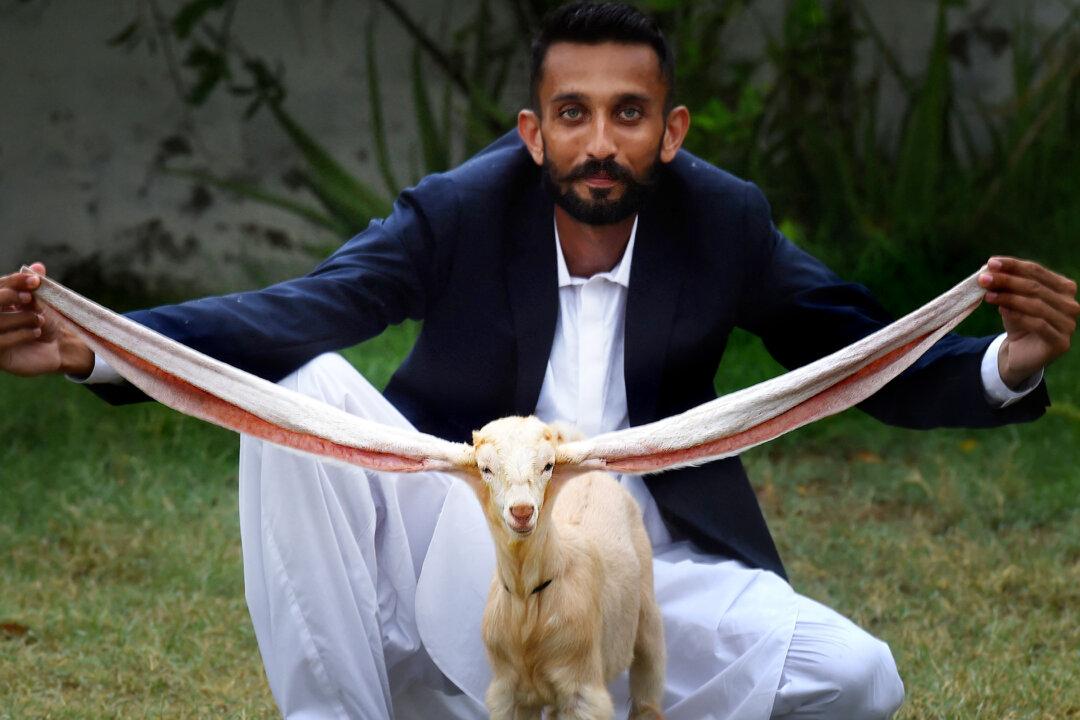With his hands, Hassan Narejo from Pakistan gently drew both of Simba’s large, droopy ears and held them outstretched for the camera.
Letting them down again, they hang like curtains on either side of the baby goat’s adorable head, touching the grass.






